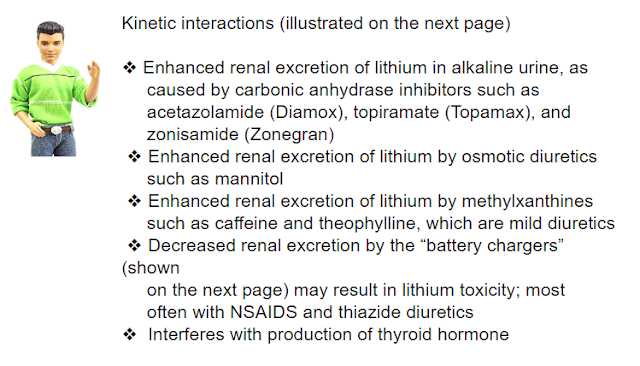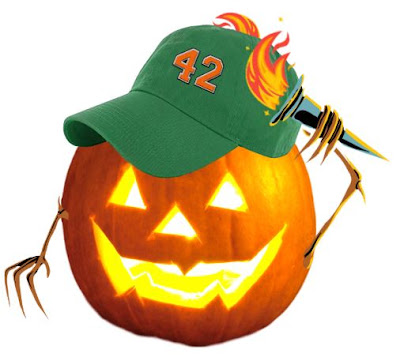Excerpt from Cafer's Mood Stabilizers and Antiepileptic Drugs, available on AmazonLithium dosing
Excerpt from Cafer's Psychopharmacology, available soon on Amazon
With lithium treatment (at standard doses), it is necessary to monitor blood levels. As for any drug, blood levels should be checked at “trough”, which is about 12 hours after the last dose. For treatment of acute mania, a relatively high level of 1.0 to 1.4 mmol/L is desired. Once mood has stabilized, the maintenance dose should be decreased to achieve a level of 0.6 to 1.0 mmol/L.. For augmentation of treatment-resistant depression (TRD), the recommended target serum level is 0.5–0.8 mmol/L. A level of 2.0 mmol/L is considered toxic. Discontinuation of lithium is ideally accomplished by slow taper over about 6–12 weeks.
It could be argued that there is no such thing as a subtherapeutic lithium level. Some naturopathic doctors recommend tiny dose 5–20 mg (equivalent) lithium orotate capsules as a nutritional supplement. These capsules are available over the counter (OTC) at health food stores and on Amazon.com.
Tremor is a telltale sign lithium level may be too high. If tremor occurs at therapeutic blood level, consider adding low-dose propranolol (about 20 mg TID), which is effective for many types of tremor.
Heavy sweating (for a healthy and adequately hydrated individual) may decrease lithium levels, because sweat-to-serum ratio for lithium exceeds that for sodium by a factor of 4 (Jefferson et al, 1982). Dehydration, however, can contribute to lithium toxicity and renal insufficiency.
The 5 Strengths of Lithium
Strength | Purpose | Blood level (mmol/L) | Approximate total daily dose | Status | Comments |
 | Acute mania | 1.0–1.4 | 1,800 mg | FDA approved | For acute mania, start 600 mg TID of extended release Lithium CR (Lithobid). Adjust dose every 3 days based on response and blood level. Use the ER formulation initially to minimize side effects. Side effects are likely. Transition to a lower dose of immediate release lithium (caps or tabs) preferably dosed entirely at night, which is easier on the kidneys. |
 | Maintenance of bipolar disorder | 0.6–1.0 | 900–1,200 mg | FDA approved | For an outpatient who is not acutely manic, one strategy is to start Lithium ER (Lithobid) 300 mg HS x 5 days, then 600 mg HS x 5 days, then 900 mg HS. Adjust dose based on blood level, and transition to immediate release lithium (Eskalith) dosed entirely at night. |
 | Treatment-resistant depression | 0.5–0.8 | 600 mg | Off-label | Lithium is one of the most effective adjuncts to an antidepressant for refractory depression. Consider starting Lithium ER (Lithobid) 300 mg BID and transitioning to 600 mg Lithium IR (Eskalith) at bedtime. |
 | Neuroprotection; Dementia; Suicide prevention; Headaches | 0.1–0.4 | 150–300 mg | Off-label | The author is a big fan of low-dose lithium 150–300 mg HS for anyone at risk of committing suicide. The rationale is that lithium has been proven to prevent suicide and prevent dementia, so why not prescribe a neuroprotective dose that is safe and has no expected side effects? Monitoring of lithium level is entirely unnecessary at the 150 mg dose, and probably unnecessary at the 300 mg dose unless the patient has side effects or is taking a battery charger (see next page). TSH and renal function should be monitored for all patients. |
 | Nutritional supplement | <0.1 | 5–60 mg | Off-label / Over-the- counter | Since trace lithium in drinking water has been shown to prevent suicide, some naturopaths recommend tiny dose over-the-counter lithium as an “essential trace nutrient” for mental wellbeing. See below for dosing options. |



Copyright 2020 CaferMed LLC














Comments
Post a Comment